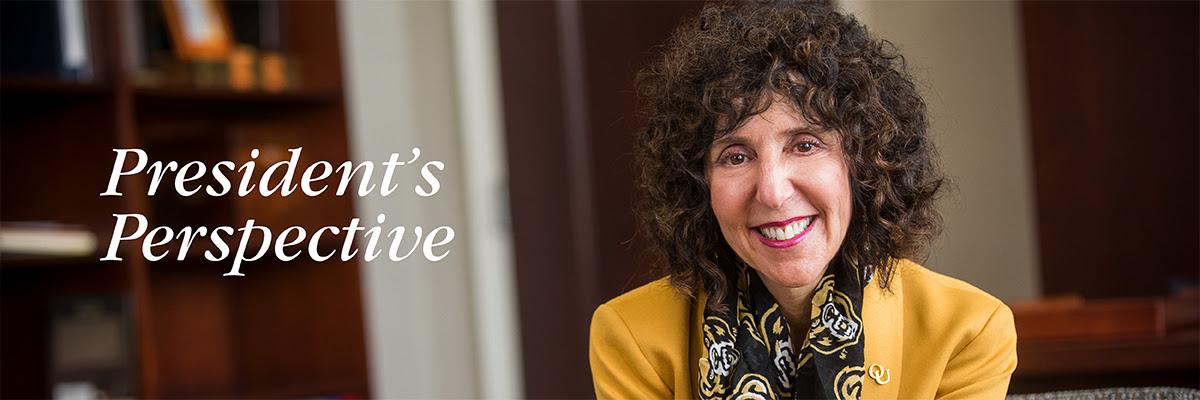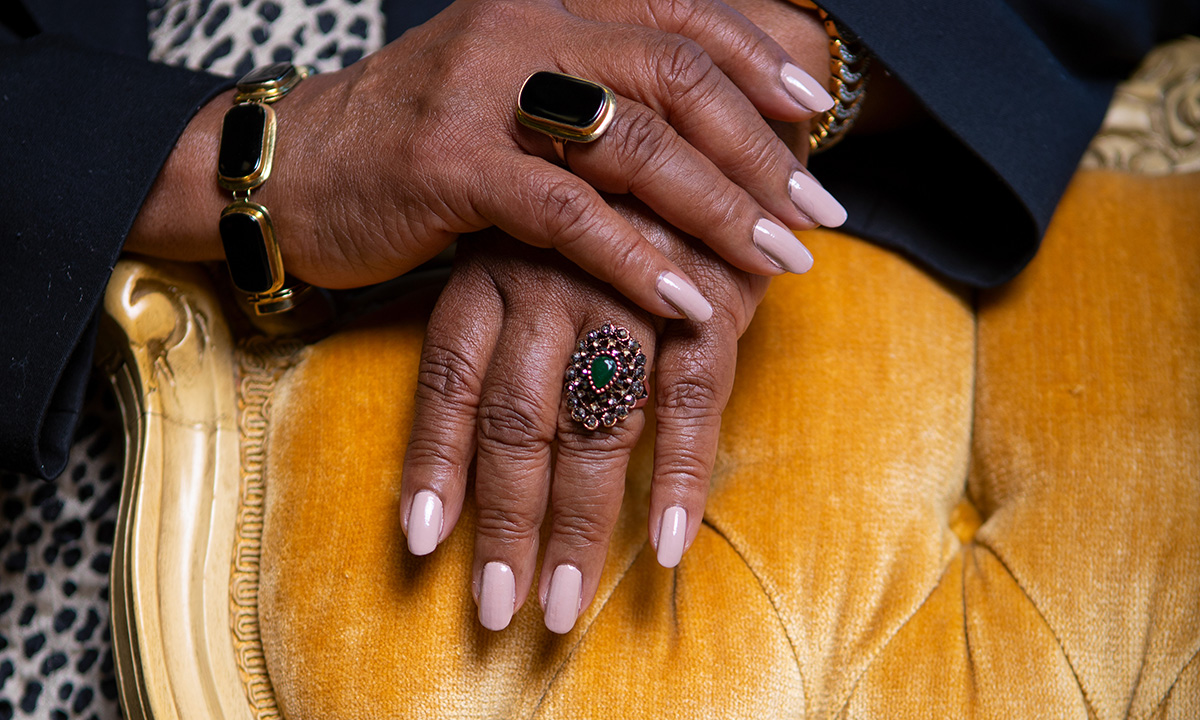
As I reflect on my first African-American History Month at Oakland University, I am reminded of how my predecessors, Chancellor D.B. “Woody” Varner, his colleague Dr. Manuel Pierson and other leaders on campus, acted to heal our little corner of the world when it seemed much of our society was collapsing under the weight of racism and historic, systemic, injustice.
And despite the ebb and flow of time, their efforts continue to reverberate through our campus today.
It was 50 years ago this month when beloved Pontiac social worker Isaac Jones and his two brothers stopped for gas at a local station. Little did they know, the attendant on duty that evening was an avowed racist who would refuse to service their car.
Ignored by the attendant, Jones got out of his car and began to pump his own gas. When the attendant saw Jones from inside the station, he was enraged. He ran out to the car and fatally shot Jones through his car window as he desperately tried to get away.
Just three years earlier in 1965, Jones was the first African-American to graduate from Oakland University. A popular Pontiac football and basketball standout, he had earned a bachelor’s degree in sociology and would go on to work as a social worker for the Oakland County Department of Social Services.
Not only an outstanding role model for his family, Jones was a role model for the communities of Pontiac and Oakland University. His senseless murder shocked the entire region. And on the heels of the 1967 Detroit uprising and other high-profile incidents of urban unrest that summer which rocked cities across the country, including Pontiac, Oakland University looked for ways to de-escalate the tension triggered by that act of violence.
This required a special kind of leadership and vision; the kind the West Texas-born and bred Chancellor of OU, D. B. “Woody” Varner possessed and wasn’t afraid to exercise.
Shortly after news of the incident reached Varner, he announced the establishment of the Isaac Jones Scholarship, to be awarded annually to a promising African-American student. Furthermore, Varner reaffirmed the university’s commitment to diversity and inclusion and fairness and social equity for all Americans.
Frankly, it was a commitment not many African-Americans from Pontiac were aware of.
“At that time, the University had very little African-American presence,” explains Dr. Karl Gregory, professor emeritus of urban economics. He was recruited from Wayne State University in 1968 following Jones murder and named assistant chancellor for urban affairs. “It was very concerning to the Pontiac black community that the university was a bastion of whiteness, yet, prided itself as an enlightened and open institution for all.”
However, during a memorial honoring Jones and announcing the scholarship, Varner let it be known that his intentions were sincere. He concluded his remarks saying:
“In this action, the University not only perpetuates the memory of our first Negro graduate, but signals its own great concern with the plight of our community, and hopes that in the process it may contribute in some important way to finding a basis for establishing a community which prizes, above all, those fundamental qualities of liberty and justice of human worth and human dignity for everyone.”
Varner backed up his words by hiring more African-American faculty and staff, as well as implementing an aggressive outreach effort to Pontiac and other minority communities with robust recruitment and bridge programs.
The person placed in charge of that effort was Dr. Manuel H. Pierson, who led many diversity and equal opportunity initiatives, including the college-preparatory program, Project 20, and Upward Bound, which is focused on recruiting disadvantaged teenagers whose high school grades (are) too low to admit them to college. Instead of past achievement they (are) selected on the basis of their potential and motivation.
The success of this program was born out of the fact there were only five African-American graduates at Oakland University in 1969 and none were males. Four years later there were more than seven times as many with 36.
Nearly 50 years later, Oakland University’s graduating class of 2016-2017 had 207 African-American graduates, 152 women, and 55 men. That was the largest single class of African-American graduates in Oakland’s history. And there has been a steady increase over the years with 189 in 2016 and 171 in the Class of 2015.
“Since the death of Isaac Jones, the University has made incremental progress to demonstrate its embracing of diversity,” explains Chief Diversity Officer Glenn McIntosh.
In 1994, Glenn was hired as the first director of the newly established Office of Minority Equity, now known as the Center for Multicultural Initiatives. Within a year, he created the Oakland University Trustee Academic Success Program, which has garnered local, state and national recognition for its retention and graduation rates for underrepresented minorities.
“Over time the office has forged cross-divisional partnerships to offer programs and services to help create a welcoming climate that embraces diversity, equity, and inclusion,” he says. “While I know we still have work to do, we have made measurable progress.”
Under the OU/Pontiac Initiative we joined forces for a broad-reaching partnership that emphasizes community engagement and mutually beneficial relationships. This engagement is part of an ongoing effort at Oakland University to work with our neighbors, especially Pontiac, to determine potential areas of meaningful partnership that will benefit both the community and Oakland’s students.
Over the past three years, more than 300 community members from Oakland University and Pontiac have met numerous times through town hall meetings to share needs and concerns and brainstormed ideas of how we could work together to solve issues of public concern.
Associate professor of History De Witt Dykes Jr., who came to Oakland in 1969, said though there remains much work to be done, much progress has been made since those turbulent days of the late 1960s. “My perception is that things have improved enormously over a long period of time. I believe there has been a considerable improvement. One thing I noticed is that both in class and out of class black students and white students are friendlier to each other. They go beyond asking how are you and work together on projects outside of class.”
In addition to improved race relations among students on campus, our faculty, staff and administration have literally signed a pledged to embrace the diversity of our community and to work to make everyone feel welcomed and valued. And I have made the commitment to diversity and inclusion the fourth strategic goal of this University’s strategic plan.
Oakland University is committed to the legacies of Jones and the late Chancellor Varner and Dr. Pierson. Diversity and inclusion, for us, is not a feel-good, reparative program to make up for past wrongs. But a fundamental and essential component of the learning process for all human beings, especially for students, faculty, and staff at an institution of higher learning. Just as important, it is an academic, institutional and business imperative for a world-class national research university.
To embrace this self-evident truth is a small but important step by all men and women of good will to treat each other decently and in our own unique way, to help repair the world.

Ora Hirsch Pescovitz, M.D.
President


 Feb. 16, 2018
Feb. 16, 2018 By Ora Hirsch Pescovitz, M.D.
By Ora Hirsch Pescovitz, M.D.

